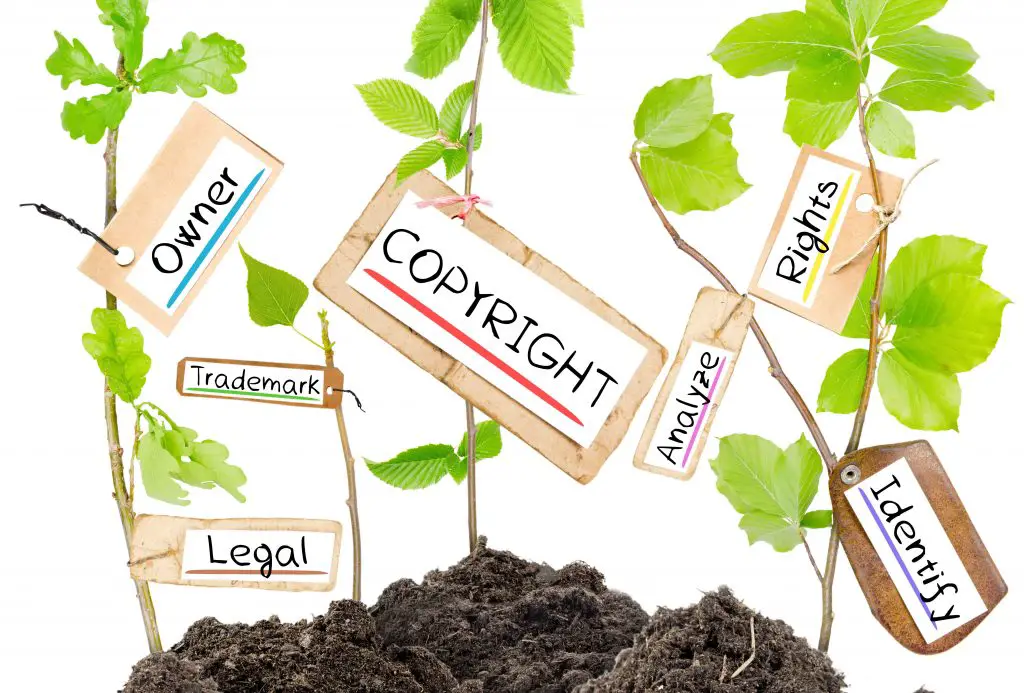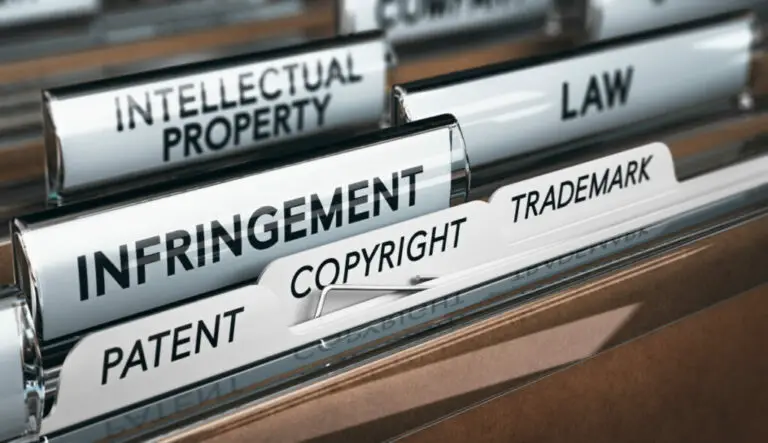What Can Be Trademarked – and What Can’t (Lots of Examples)

If you want to start a new business or if you are trying to get more serious about the branding your current business has, knowing about trademarks can be a huge benefit. What can you actually trademark?
Words, logos, slogans, color palettes, sounds, and smells can be trademarked. Any generic or descriptive term cannot be trademarked. Any image or phrase that is visually or phonetically similar to another trademark cannot be trademarked. Original works require a copyright but cannot be trademarked.
While knowing what can and can’t be trademarked is important, you will still want to learn about the things you will need to do to ensure your potential trademark has the highest chances of getting registered.
Things that Can Be Trademarked
What is a trademark?
According to the USPTO, (the United States Patent and Trademark Office), a trademark is an image, word or phrase, color scheme, sound, or smell that distinctly identifies or represents a company. A trademark can also be a combination of these things as well, such as a logo and name or slogan. A trademark must be unique and specific and not resemble any other registered trademark or any trademarks in review.
Things that can be trademarked
The more obvious things people trademark are things like logos, company names, and slogans, but other features can also be trademarked. Things like product packaging, company jingles, recognizable smells on products or in storefronts, and even specific colors that connect consumers to a company or product can be trademarked as well.
A logo is an image that represents and depicts a company or product. These and company names are the most common type of trademarks.
A slogan is a phrase or short sentence that helps to identify a company. A trademark can’t prevent regular people from using certain phrases or words, but it can prevent companies and businesses from using them for marketing or branding purposes. You can use any company’s slogan in casual conversation, and it’s actually a great boost for the company’s marketing, but if you are speaking on behalf of a business, you could be at risk of legal action against you.
While it may seem silly to trademark a color, it is definitely possible. Some brands have a color that consumers automatically recognize. This is a great marketing tool, but if the color is used by another business, the original marketing tool may be diminished.
A scent may be trademarked only if it distinguishes the brand and isn’t a part of a company focused on scents, such as a perfume or candle company. Scents are trademarked only if they are distinct and connected to a brand or product. A trademark on a scent isn’t very common, and it can be difficult to obtain, but there are companies with scent trademarks. Trademarking a scent may not be necessary either; there isn’t a lot of competition for specific smells on products or in storefronts.
Examples of Trademarks
Logos:
Most big brand logos are trademarked and many smaller businesses also trademark their logos and company names.
The Golden Arches
Everyone will recognize the big M anywhere. This is McDonald’s’ trademarked logo.
A silver apple missing a bite
Just as recognizable as the golden arches, the Apple logo is trademarked for use only by Apple.
Slogans:
“Just Do It”
Perhaps the most well-known slogan is given to us by Nike. This phrase was trademarked in 1989 after it was presented in an advertising meeting in 1988.
“Hasta la Vista Baby”
Even phrases from movies, songs, or other media can also be trademarked. This phrase, spoken by Arnold Schwarzenegger in The Terminator, was registered as a trademark in 2007.
Barbie Pink
Yes, the bright pink that is so connected with the little dolls are trademarked. The pink color Barbie uses can’t be used commercially by any other similar company. Mattel, the owner of Barbie, has also increased the trademark to cover products such as bubble baths and cereal. This color was trademarked in 1998.
Cadbury Purple
In 2004, Cadbury trademarked their shade of purple. The purple was chosen in 1800 as a tribute to Queen Victoria.
Sounds:
The MGM Lion
The MGM Lion is actually a compilation of lions. MGM has trademarked all of the different pieces used to make the lion. The lion’s roar is one of those pieces that is trademarked. The lion’s roar is recorded separately and overlaid onto the video of a yawning lion.
Mockingjay Whistle
The whistle from The Hunger Games was trademarked in 2014. This iconic whistle can now only be used for Hunger Games merchandise, games, films, clips, and other media
Smells:
OSEWEZ Plumeria Scented Embroidery Thread
The brand OSEWEZ was the first to apply for a scent trademark when they applied for a trademark on their plumeria scented embroidery thread. The trademark was issued in 1990, opening the door to more trademarks on scents.
Verizon Store Scent
Maybe you’ve noticed that “flowery musk” scent emanating from any Verizon storefront or mall kiosk. It’s not just a pleasant air freshener—it’s an official company trademark. Verizon trademarked the smell they pump through all of their stores in 2014.
Things that Cannot Be Trademarked
Most things can be trademarked if there is a way you can prove that it genuinely connects to your company. There are a few things, however, that can’t be trademarked, regardless of how relevant they are to your brand. Generic terms and images, phrases, words, or colors that are too similar to other trademarks in review or registered can’t be trademarked.
Anything that is too generic can’t be trademarked. A term such as the name of a product or a descriptor word may not be registered as a trademark unless there is some defining feature that sets it apart from other products or descriptor words. Because these terms can be used so easily in other marketing settings, businesses can’t have a monopoly on certain descriptors.
If your logo, design, color, phrase, or sound is too similar to another trademark, it won’t be registered. If you have a name or phrase you want to trademark that is spelled differently than another trademark but is phonetically similar, your trademark will not be registered. A proposed trademark with a different image, but a similar phrase to an existing trademark will also be denied. Any image that looks similar, uses the same colors, or incorporates all of the elements of a different trademark won’t be registered. If a phrase means the same thing, but it’s in a different language, it will be denied.
It’s tough to set strict rules for what is considered too similar, but each application is reviewed carefully before it is denied or accepted for registration. Before you submit an application, there are some things you can do to check the availability of your desired trademark. Below are listed some examples, but also check out the section on searching for similar trademarks.
Typically, your application is only pitted against companies with the same focus. For example, if you are selling t-shirts and you want to register a logo, your logo design can be checked against any clothing brand out there. This can include hats, socks, and even accessory companies. Your logo may be denied because of competition with a non-related brand, but if it isn’t too similar, you have a higher chance of competing against a business in a different area.
Examples of Things that Cannot Be Trademarked
Now that we’ve discussed what things can be trademarked, let’s talk about what things will probably get your trademark refused.
Generic Terms
The name of a product, like “hand soap,” can’t be trademarked because so many other companies already make and sell hand soap. Here are some examples of generic terms you can’t trademark:
- Toy
- Sports equipment
- Phone
- Camera
- Furniture
- Garden Tools
While words like “Toy” can’t be trademarked on their own, they can be given distinctive features that set them apart in order to qualify for trademark registration. For example, Toys R Us has been a registered trademark since 1960. This company used a generic term but made it unique by adding the rest of the phrase and designing a logo that complements the branding.
Descriptor Words
Descriptor words combined with a generic term aren’t enough to set your brand apart. Unlike Toys R Us, a descriptor word matched with a generic term doesn’t identify the brand at all. Here are some examples of word combinations that wouldn’t qualify for trademark registration:
- Neat hats
- Comfy Tees
- Ideal Smartphone
- Quickest washing machine
While these may tell consumers what the company is all about, they don’t offer any unique branding that sets the company apart from other companies and products.
A company that does sell neat hats can’t trademark those words because that would take the opportunity from other companies that also make neat hats.
While it may seem that some companies and products have trademarked generic terms, it’s actually the other way around. The brand and product names have become so common in casual conversation that they seem to replace the generic terms. For example, when a kid scrapes their knee, they ask for a BandAid. The term BandAid has become so popular that it may seem strange to think that they weren’t always called BandAids. The generic product term is “bandage.”
Another example is ChapStick. While not every little tube of lip balm is called ChapStick, other companies can’t use the word ChapStick in their marketing, branding, or logos due to the trademark. Kleenex, Google, and Tupperware are other examples of more generic trademarks and brand names.
Similar to another trademark
If your image, phrase, sound, or scent is similar to another trademark, it won’t receive a registered trademark. This is true when it comes to registered trademarks and trademarks in review.
Here are some examples of potential trademarks that are too similar:
Rick’s Rad Tees
Can’t be registered if this company is already trademarked: Rick’s Radical T-shirts
Camino Rocoso
Can’t be trademarked because it’s Spanish for Rocky Road
In addition to similar phrases, similar images can’t be trademarked.
If you want to trademark a logo that is a circle with an “M” inside of it, you will likely be denied because it’s too similar to the m&m logo.
A mountainscape logo named after a famous mountain may have trouble getting registered because of its similarity to the Patagonia logo.
Search for Similar Trademarks
Before you submit a trademark application, you can use the TESS (Trademark Electronic Search System) to search for similar trademarks on tmsearch.uspto.gov. This is the site created by the USPTO. On the site, you can choose the type of trademark you want to search for, such as Basic Word Mark, like a company or product name, or a Structured Word and/or design mark.
When searching image trademarks, you will need to use a code system to find the images that may be similar to yours. The code is a six-digit number with three pairs of numbers. These numbers represent a different classification. The first set starts with the broadest classifications, then it is narrowed down by the other number sets, resulting in a code that will show you the images most similar to yours
For example, the code 01.01.03 is the code you would use to look up a five-point star. Category 01 designates celestial bodies, natural phenomena, and geographical maps. The second set 01 narrows it down to stars and comets. The last set of numbers, 03 is specified to stars with five points.
You can access the design codes and create your image code.
Copyright vs Trademark (When to use each)
While trademarks and copyrights are similar in practice and legality, they can’t be used interchangeably. Knowing which to use is important when it comes to protecting your brand and your work.

A copyright is designed to protect original work, such as novels, music, and plays. Copyrights are generally reserved for larger pieces of work that aren’t necessarily brand-specific or related to a company or product. Things like artwork, photography, written work, and designs can be copyrighted.
A photographer might copyright a photo they took so no one online can steal the image, reproduce it, and sell it. Certain fabrics and fabric designs are copyrighted so no one can create the same fabric or resale it. However, items made using copyrighted fabric can be sold as their own original work.
A trademark is generally a smaller piece of work that is related to marketing and branding. Trademarks are generally associated with a business or company, but they can also be phrases or images from popular media as detailed above.



